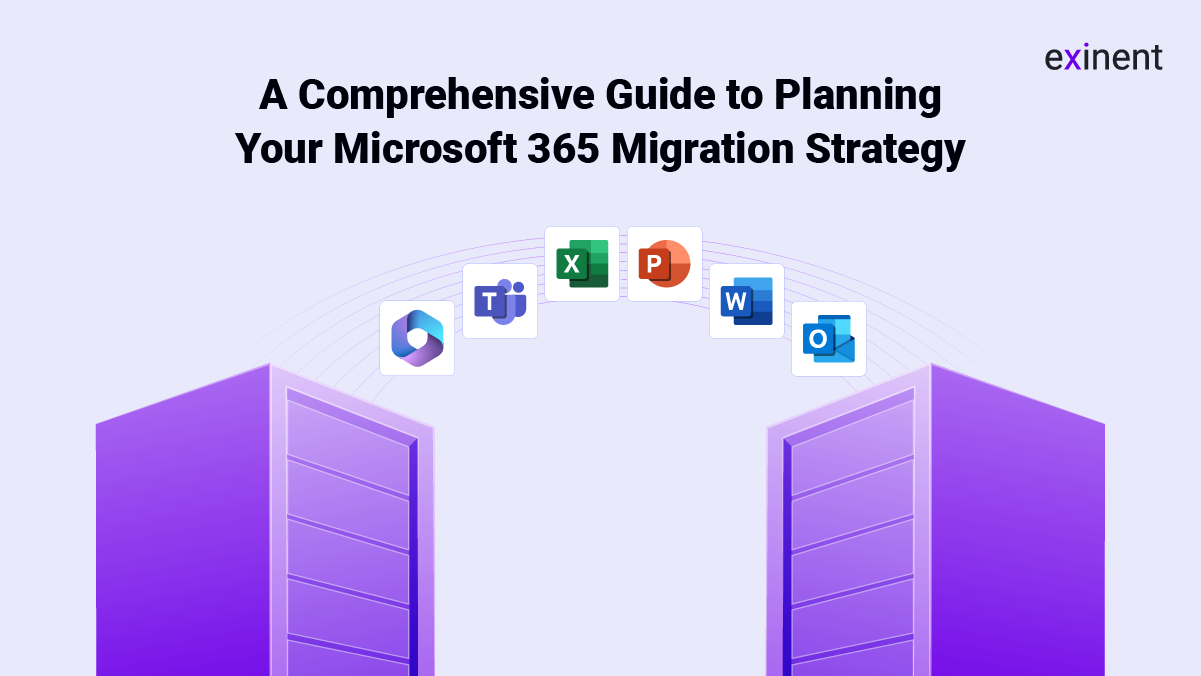
Migrating to Microsoft 365 is a transformative step for any organization, promising enhanced productivity, collaboration, and security. However, a successful transition requires careful planning and execution. At Exinent, we understand the complexities involved in this process, and we’re here to guide you through each step. This comprehensive guide will help you plan your Microsoft 365 migration strategy effectively.
1. Assess Your Current Environment
Before diving into the migration process, it’s crucial to assess your existing environment. This involves reviewing your current IT infrastructure, software applications, and data storage systems. Identify what needs to be migrated, including emails, documents, and other essential data. This assessment will help you understand the scope of the migration and prepare for any potential challenges.
Key Actions:
- Conduct an inventory of your current IT assets.
- Evaluate the compatibility of your existing systems with Microsoft 365.
- Identify any data or applications that may require special attention during migration.
2. Define Your Migration Objectives
Clearly defining your migration objectives is essential for a successful transition. Determine what you hope to achieve with Microsoft 365, such as improved collaboration, increased productivity, or enhanced data security. Having specific goals will guide your migration strategy and help you measure success post-migration.
Key Actions:
- Set clear, measurable objectives for the migration.
- Align these objectives with your organization’s overall business goals.
- Communicate these objectives to all stakeholders to ensure alignment and support.
3. Choose the Right Migration Approach
There are several approaches to Microsoft 365 migration, each suited to different needs and environments. Common approaches include:
- Cutover Migration: Suitable for small organizations, this approach involves moving all data at once. It’s quick but may require more downtime.
- Staged Migration: This approach involves moving data in phases over time, which can be less disruptive but requires careful planning.
- Hybrid Migration: Ideal for larger organizations, this approach allows you to run Microsoft 365 and on-premises systems simultaneously during the transition.
Choose the approach that best fits your organization’s size, complexity, and needs.
Key Actions:
- Evaluate the pros and cons of each migration approach.
- Consult with a migration expert to determine the best fit for your organization.
- Plan for potential downtime and ensure that business operations are minimally impacted.
4. Develop a Detailed Migration Plan
A detailed migration plan is crucial for ensuring a smooth transition. Your plan should outline each step of the migration process, including timelines, resource allocation, and risk management strategies. Key components of the plan include:
- Data Migration: Determine how and when data will be transferred to Microsoft 365.
- Application Integration: Plan for integrating existing applications with Microsoft 365 services.
- User Training: Develop a training program to help users adapt to the new system.
Key Actions:
- Create a detailed timeline for each phase of the migration.
- Assign responsibilities to team members and establish clear communication channels.
- Identify potential risks and develop mitigation strategies.
5. Implement a Pilot Migration
Before fully committing to the migration, it’s wise to conduct a pilot migration. This involves moving a small subset of data and users to Microsoft 365 to test the process and identify any issues. The insights gained from the pilot can help refine your migration strategy and ensure a smoother full-scale transition.
Key Actions:
- Select a representative sample of data and users for the pilot.
- Monitor the pilot migration closely and gather feedback from participants.
- Use the feedback to make necessary adjustments to your migration plan.
6. Execute the Full Migration
With your plan in place and the pilot successfully completed, it’s time to execute the full migration. Ensure that all team members are aware of their roles and responsibilities during this phase. Monitor the migration process closely to address any issues promptly and minimize disruptions.
Key Actions:
- Follow the migration plan closely, making adjustments as needed.
- Provide support to users throughout the transition to address any challenges.
- Continuously monitor the migration process and resolve any issues that arise.
7. Post-Migration Review and Optimization
After the migration is complete, conduct a thorough review to ensure that all data and applications have been successfully transferred. Evaluate the performance of Microsoft 365 and identify areas for optimization. This phase is crucial for addressing any lingering issues and ensuring that your organization fully benefits from Microsoft 365.
Key Actions:
- Perform a post-migration audit to verify data integrity and functionality.
- Gather feedback from users to identify any areas for improvement.
- Implement any necessary optimizations to enhance the performance and usability of Microsoft 365.
Conclusion
Planning a successful Microsoft 365 migration requires careful assessment, clear objectives, and a detailed strategy. At Exinent, we are committed to helping you navigate this process with confidence. By following these steps and leveraging our expertise, you can ensure a smooth transition to Microsoft 365 and unlock its full potential for your organization. For more information and support on your Microsoft 365 migration journey, visit Exinent.
